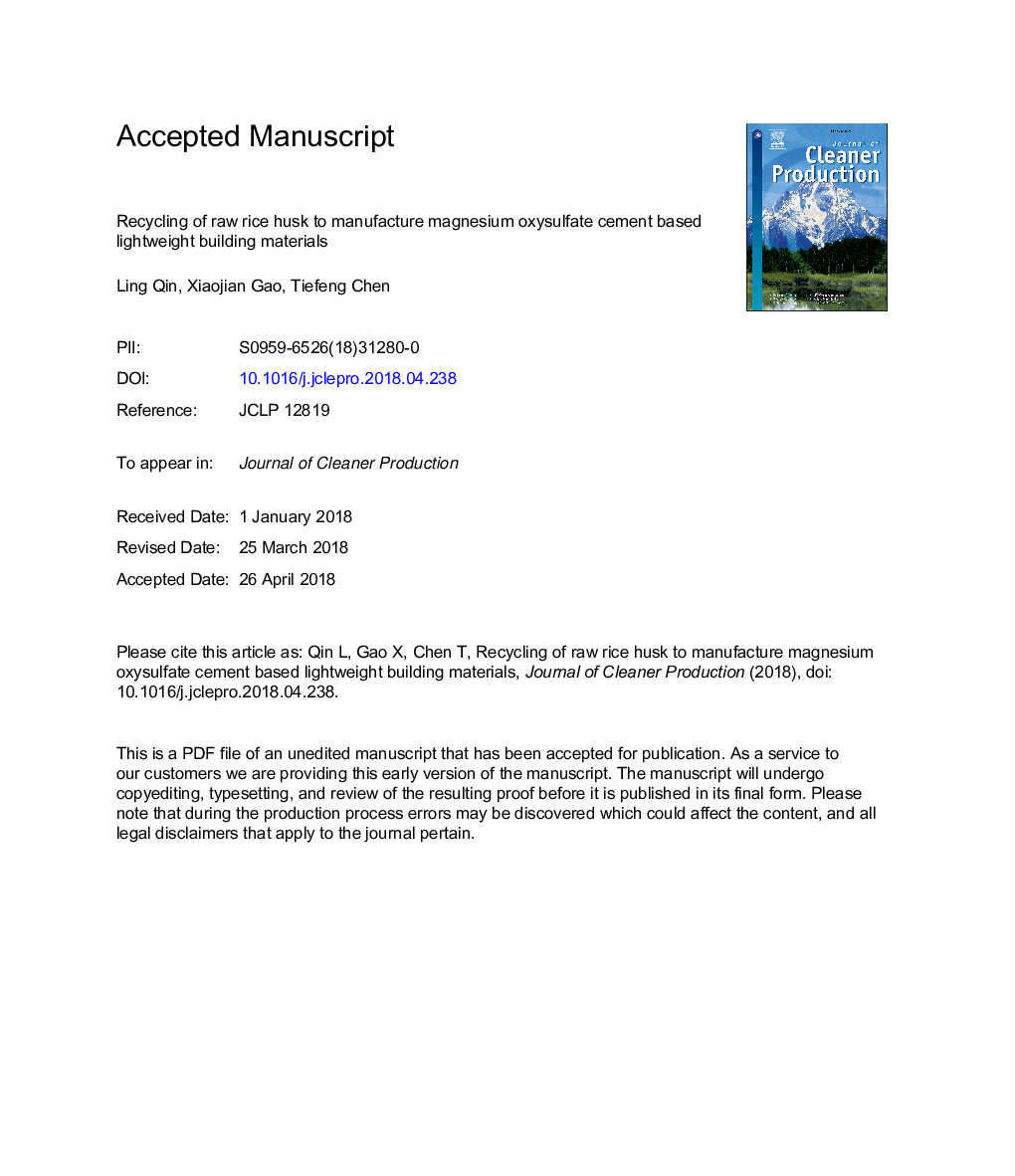| Article ID | Journal | Published Year | Pages | File Type |
|---|---|---|---|---|
| 8094774 | Journal of Cleaner Production | 2018 | 33 Pages |
Abstract
To reduce environmental pollution induced by the production of Portland cement-based building materials and eliminate the release of solid wastes from agriculture industry, this paper presents a newly-developed lightweight building material based on incorporating raw rice husk and foam bubbles in magnesium oxysulfate cement paste. Mechanical strength, bulk density, thermal conductivity and drying shrinkage of this material were carried out and phase composition, air bubble distribution and microstructure were studied on typical samples by using XRD (X-ray diffraction), FTIR (Fourier transform infrared spectroscopy), OM (opto-digitial microscope) and SEM (scanning electron microscope) facilities. The results show that raw rice husk or/and foam bubble decrease compressive strength, thermal conductivity and bulk density. Compressive strength of this composite material at 28 days decreases from 70.4â¯MPa to 1.1â¯MPa when the bulk density ranges from 1722â¯kg/m3 to 450â¯kg/m3, being superior to traditional lightweight aggregate concretes. Drying shrinkage decreases with the incorporation of foam bubble and increases with the addition of raw rice husk. When the addition of raw rice husk is kept the same, there is an optimal dosage of foam bubble to obtain the lowest drying shrinkage. An excellent interfacial zone forms between raw rice husk and MOS cement paste due to numerous neat conical protrusions on the surface of rice husk particle. Therefore, this raw rice husk incorporated lightweight material has a great potential for applications to inner partition walls and thermal insulating components in buildings.
Related Topics
Physical Sciences and Engineering
Energy
Renewable Energy, Sustainability and the Environment
Authors
Ling Qin, Xiaojian Gao, Tiefeng Chen,
